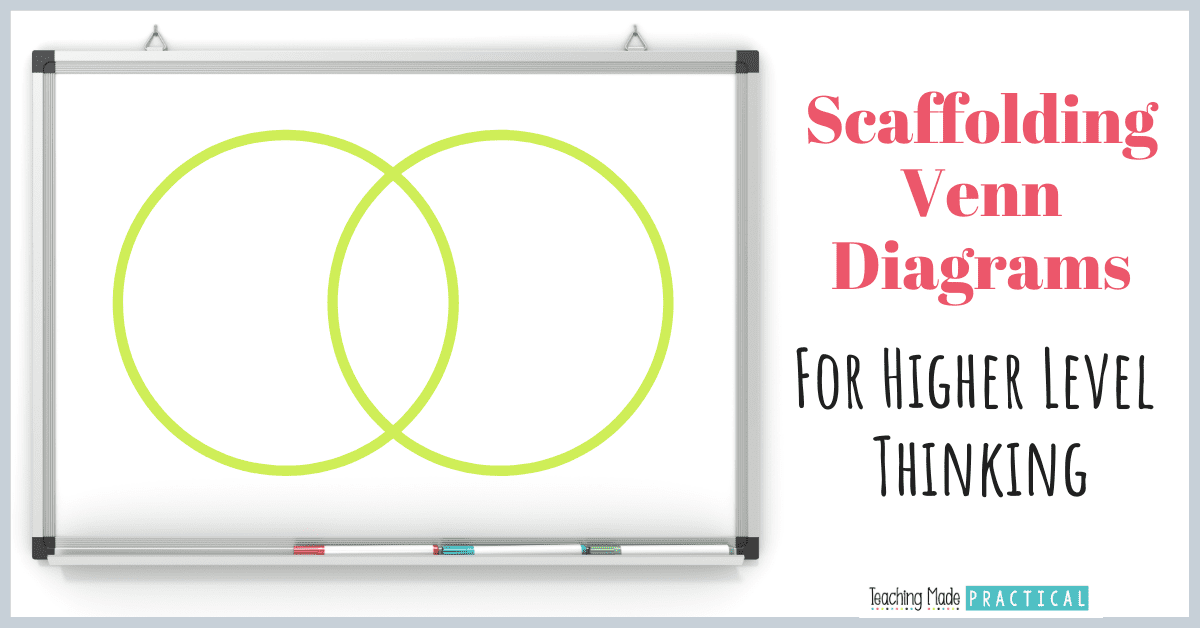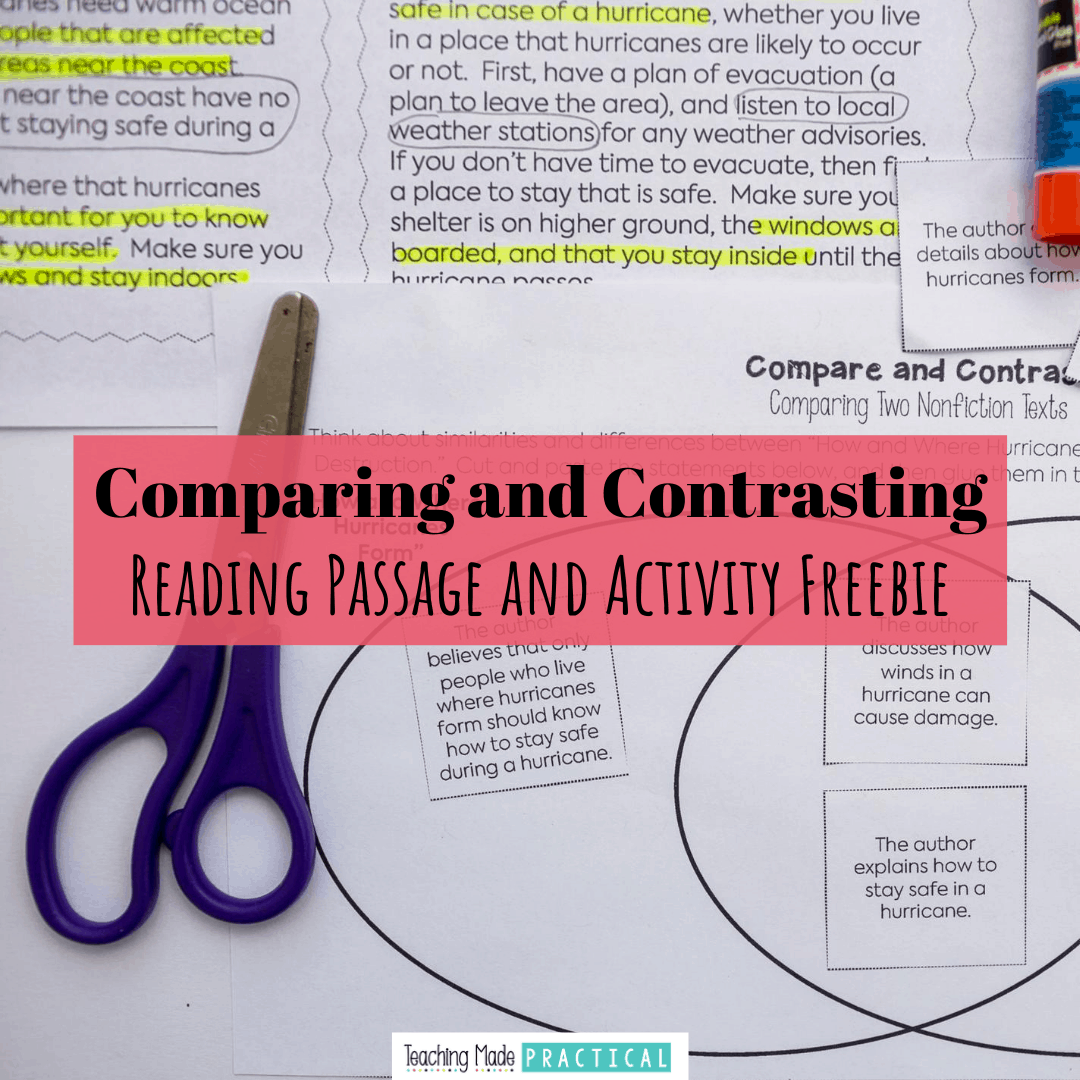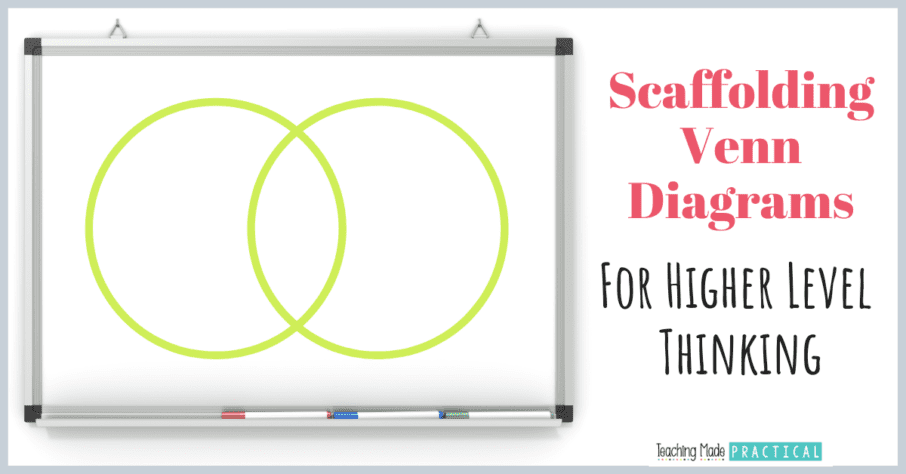
Venn Diagrams are a tool commonly used in 3rd grade, 4th grade, and 5th grade classrooms to teach students how to compare and contrast. And while Venn Diagrams worksheets can be useful, they can also be used in a way that promotes lower level thinking instead of higher level thinking.
Usually, teachers give students a completely blank Venn Diagram template. At first glance, a blank diagram seems like it would encourage higher level thinking because it is completely open ended. However, this often solicits very surface level answers.
How many times have you asked a student to compare themselves with a main character from a book and they proudly announced, "I am a boy and the main character in the story was a girl!" Or, "We both have a brother." Very surface level observations are most common.
To utilize Venn Diagrams to their full potential, we need to draw out higher level thinking from our students.
Scaffold Higher Level Thinking in Venn Diagrams
Often, teachers teach students how to use Venn Diagrams using the "I Do, We Do, You Do" method. First, we model to students. Then, we have students complete a Venn Diagram with us. Finally, we give students a blank one to fill out on their own. And while this can be an effective method, students need a LOT more of the "We Do" if they are going to use higher level thinking.
Start scaffolding this by providing students with already written statements. Have students decide where on the Venn Diagram the statements belong. Use statements that require students to think a little more deeply about the text.
Giving students several opportunities to read and sort statements that had higher level thinking involved will help them see that they should be including thoughtful, deep answers when filling out Venn Diagrams rather than surface level answers.
This does take more preparation, but it is a great way to model high expectations to students. And even better, this Venn Diagram freebie requires no prep on your part!
Using Venn Diagrams in Your Comparing and Contrasting Lessons
After students have had plenty of examples, they will most likely still need additional scaffolding in order to provide answers that require higher level thinking. Do this by asking students to provide a similarity or difference about a certain topic.
For example, have students come up with a similarity or difference in the character traits of two of the characters. This requires students to think at a deeper level and keeps them from being able to provide a surface level answer.
Use this list of ideas below to help you direct your 3rd grade, 4th grade, or 5th grade students to higher level thinking when comparing and contrasting.
Comparing and Contrasting in Fiction - Have students provide a similarity or difference about:
- setting
- character traits
- attitudes/thoughts
- how the characters changed
- what the character learned
- important events that occurred in the beginning/middle/end
- the problems the characters had
- how the characters solved problems
- how the characters behaved
- the theme of 2 different stories
Comparing and Contrasting in Nonfiction - Have students provide a similarity or difference about:
- important events
- text features
- the author's point of view
- something new students learned about the topic
- something students already knew about the topic
- most important difference/most important similarity
Giving students a little more direction as they fill in a blank graphic organizer will help them think more deeply.
You might also like these other compare and contrast activity ideas. Having students complete a ranking activity, answer "Would You Rather" questions, or use table and charts are also great ways to encourage higher level thinking in your comparing and contrasting lessons.

Want a Free Reading Passage with a Scaffolded Venn Diagram Activity?

